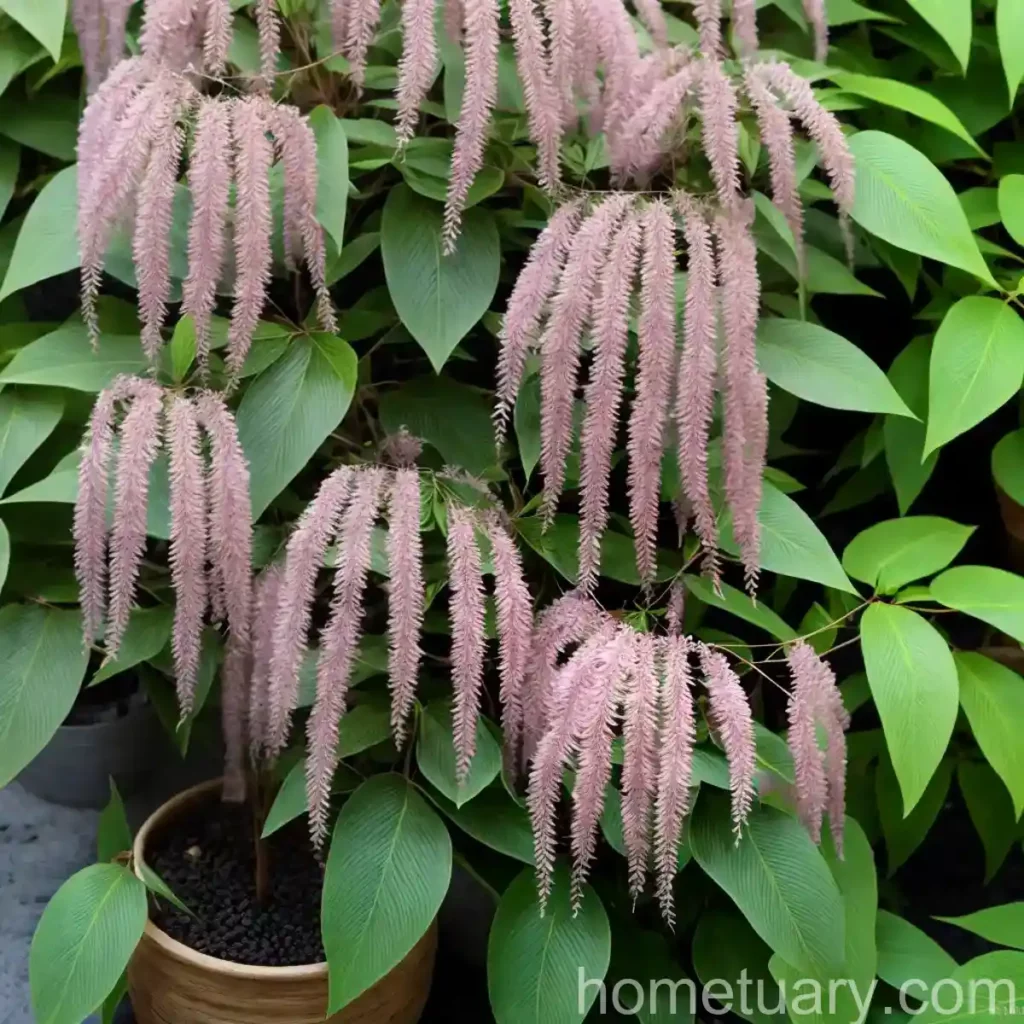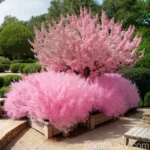Everything You Need to Know About Chinese Indigo (Indigofera Decora f. Alba)
From the lush gardens of China to the vibrant hues of traditional textile dyes, Chinese indigo (Indigofera decora f. alba) has a rich and storied history. This enchanting plant has been revered for centuries due to its stunning white flowers and its diverse cultural and medicinal uses. In this comprehensive guide, we will delve into the cultivation, uses, and care of Chinese indigo, exploring its role in both horticulture and human culture.
Key Takeaways – Chinese Indigo (Indigofera Decora f. Alba)
- Chinese indigo, scientifically known as Indigofera decora f. alba, is an esteemed plant with cultural, medicinal, and dyeing significance.
- This species requires ample sunlight and well-drained soil for optimal growth.
- The plant can be propagated from seeds or cuttings, while occasional pruning helps maintain its shape and health.
- Chinese indigo is susceptible to certain diseases and pests, making regular monitoring and care essential for its well-being.
What is Chinese Indigo (Indigofera Decora f. Alba)?
Description of Chinese Indigo
Chinese indigo (Indigofera decora f. alba) is a deciduous perennial plant renowned for its striking white flowers and delicate foliage. Belonging to the Fabaceae family, this species is native to China and holds substantial cultural significance in traditional Chinese medicine and dyeing practices.
Chinese Indigofera Species
As a member of the Indigofera genus, Chinese indigo is part of a diverse group of plants known for their vibrant flower clusters and varied uses. Within this genus, numerous species like Indigofera australis, Indigofera tinctoria, and Indigofera decora contribute to the horticultural and cultural landscape across the globe.
Alba Indigofera Decora Characteristics
The distinguishing feature of the Chinese indigo plant is its clusters of small, white flowers that elegantly adorn its branches. This delicate bloom serves as both an ornamental accent and a source of natural dye, adding flair to gardens and textiles alike.
Cultivation of Chinese Indigofera Decora
Chinese indigo thrives in temperate climates and exhibits robust growth when provided with optimal conditions. Its popularity in horticulture stems from its elegance and adaptability, making it a desirable addition to gardens and landscapes.
Culture
Chinese Indigofera Decora f. Alba Varieties in China
In its native land, China, numerous varieties and cultivars of Chinese indigo exist, each with its unique characteristics and regional significance. The plant’s diverse genetic pool has fostered a rich tapestry of indigenous varieties, contributing to its widespread cultivation and cultural relevance.
Chinese Indigofera Decora f. Alba Habitat
Chinese indigo is native to various regions of China, including provinces like Yunnan, Guangxi, and Guangdong. Its natural habitat encompasses diverse landscapes, from mountainsides to riverbanks, reflecting the plant’s adaptability to different environments.
Uses
Chinese Indigofera Decora f. Alba Uses
Chinese indigo holds multifaceted uses that span cultural, medicinal, and horticultural domains. Its distinctive white flowers, dyeing properties, and medicinal applications have entrenched it as a versatile and cherished plant in Chinese heritage.
Traditional Uses of Chinese Indigofera Decora
The plant has been integral to traditional Chinese dyeing practices for centuries, with its flowers yielding a natural dye that imbues textiles with a brilliant white color. Furthermore, its leaves have been utilized in traditional Chinese medicine, serving as a herbal remedy for various ailments.
White Indigofera Decora in Gardens
In contemporary horticulture, Chinese indigo serves as an enchanting ornamental plant, adorning gardens with its ethereal white blossoms and contributing to the visual splendor of landscapes.
Water
Watering Chinese Indigofera Decora
Chinese indigo plants require regular watering to maintain adequate moisture levels in the soil. While they are relatively tolerant of dry conditions, consistent watering promotes healthy growth and robust flowering.
Sustainable Dyeing with Chinese Indigo Plant
The dye derived from Chinese indigo provides an eco-friendly, sustainable alternative to synthetic dyes. Its natural properties not only yield vibrant colors but also align with environmentally conscious dyeing practices.
Sunlight
Sunlight Requirements of Chinese Indigofera Decora
This species thrives in full sunlight, requiring at least 6 to 8 hours of direct sunlight daily to support robust growth and prolific flowering. When planted in areas with insufficient sunlight, Chinese indigo may exhibit reduced flowering and overall vigor.
Chinese Indigofera Decora White Flowers
The exquisite clusters of white flowers that adorn the Chinese indigo plant are a testament to its affinity for sunlight. With ample exposure, these blossoms flourish, accentuating the plant’s splendor and visual appeal.
Fertilizer
Fertilizing Chinese Indigofera Decora
Applying a balanced, slow-release fertilizer during the active growing season aids in promoting healthy foliage and abundant blooming. The fertilizer should be applied according to package instructions, ensuring optimal nutrient uptake by the plant.
Soil
Soil Requirements for Chinese Indigofera Decora
Well-draining, loamy soil with a slightly acidic to neutral pH is ideal for Chinese indigo. The plant thrives in fertile soil that retains moisture without becoming waterlogged, providing a supportive medium for root development and overall plant health.
Pruning
Pruning Chinese Indigofera Decora
Periodic pruning is beneficial for Chinese indigo, as it helps maintain a shapely and compact form while stimulating new growth. Pruning should be conducted during the dormant season, removing dead or diseased branches and shaping the plant as desired.
Propagation
How to Propagate Chinese Indigofera Alba
Chinese indigo can be propagated from both seeds and cuttings, allowing for the expansion of its presence in gardens and landscapes. Propagation from seeds and cuttings follows specific protocols to ensure successful establishment and growth of new plants.
Container
Chinese Indigofera Decora f. Alba in Containers
While Chinese indigo is commonly cultivated in garden beds, it also thrives in containers, adding a touch of elegance to patios, balconies, and indoor spaces. Cultivating this species in containers requires attention to its specific needs and growth behaviors.
Common Diseases
Disease Diagnosis
Chinese indigo is susceptible to certain diseases, including fungal infections and bacterial pathogens that can compromise its overall health. Quick and accurate diagnosis of these diseases is crucial for implementing targeted treatment and preventing their spread.
Common Pests
Chinese Indigofera Decora f. Alba and Pest Management
Pests such as aphids, whiteflies, and spider mites pose potential threats to Chinese indigo, necessitating vigilant pest management and proactive measures to mitigate infestations. Regular monitoring and prompt intervention help safeguard the plant against pest-related damage.
Botanist’s Tips
Chinese Indigofera Plant Care
- Sunlight: Ensure the plant receives ample sunlight for robust growth and abundant flowering.
- Watering: Maintain consistent moisture levels in the soil, avoiding prolonged dry periods.
- Soil: Plant Chinese indigo in well-draining, fertile soil to support healthy root development.
- Pruning: Conduct periodic pruning to shape the plant and remove dead or overgrown branches.
- Disease and Pest Management: Monitor the plant for signs of diseases and pests, implementing appropriate control measures when necessary.
Fun Facts
- Chinese indigo has a rich history in traditional Chinese medicine, serving as a remedy for various ailments.
- The plant’s white flowers have been historically utilized in dye production, contributing to the creation of vibrant textiles.
- Chinese indigo holds cultural significance in Chinese folklore and ceremonial practices, symbolizing purity and elegance.
Links to External Resources
For additional information about Chinese indigo and related topics, please refer to the following resources:
- Chinese Indigofera Decora f. Alba: A Horticultural Guide
- Traditional Uses of Chinese Indigo in Textile Production
- Medicinal Properties of Chinese Indigo in Traditional Chinese Medicine
- Cultural Significance of Chinese Indigo in Chinese Folklore
In conclusion, Chinese indigo (Indigofera decora f. alba) embodies a captivating blend of natural beauty and cultural significance, positioning it as a cherished plant with diverse applications. From its elegant white blossoms to its contributions to traditional dyeing and medicinal practices, Chinese indigo continues to enchant and inspire. By understanding its cultivation, uses, and care requirements, enthusiasts and horticulturists can further appreciate the enduring allure of this remarkable plant.















